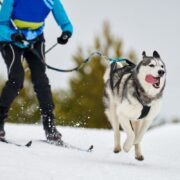A dog can be a great source of companionship for a child. Spending time with dogs can be a lot of fun, help decrease isolation, improve self-esteem, and teach kids responsibility and empathy; but dogs and children don’t always get along.
It’s important to be thoughtful about the relations between children and pets. Dog owners need to take precautions to make sure that the interactions are safe and positive.
Temperament Considerations
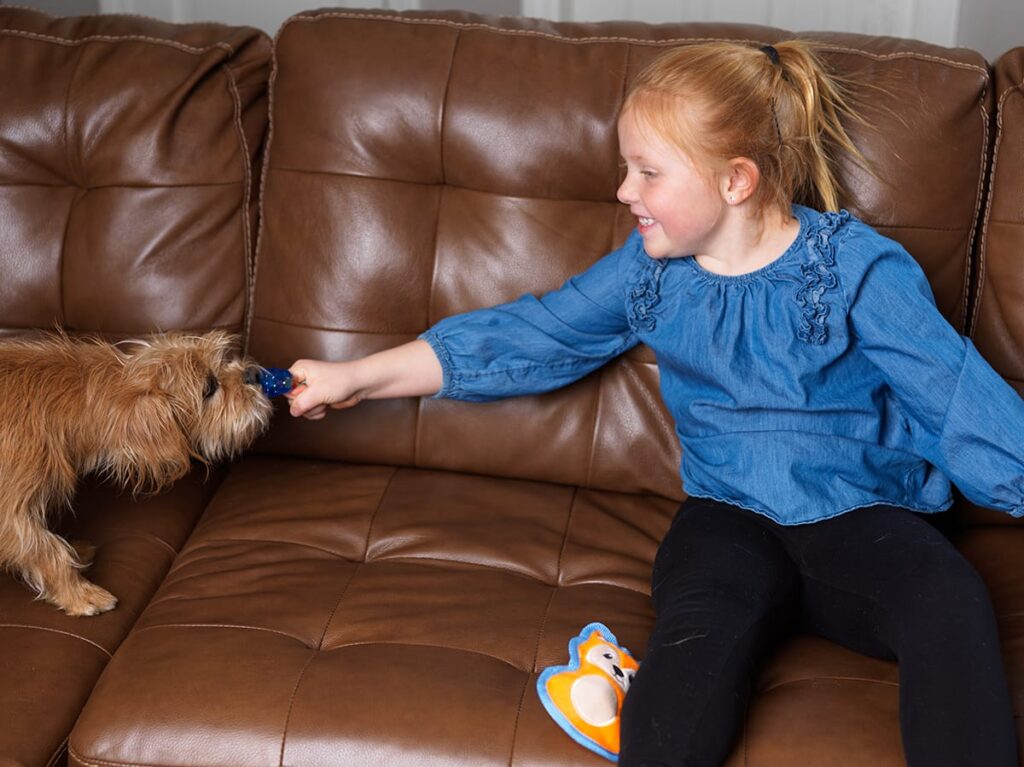
Remember that not all kids and not all dogs are going to be a match for each other. Before introducing a dog to children, consider the individual dog’s temperament, its experience being around children, as well as the child’s maturity, behavior, and mannerisms. Children can move unpredictably and have toys that make loud noises which can be stressful or frightening to dogs.
Dogs who had early socialization around children are most likely to have learned appropriate ways to interact with them. However even if they were raised around children, not all dogs enjoy spending time with kids.
If your dog is wary or nervous about people, proceed very cautiously before introducing that dog to any children. If your dog has ever displayed any aggressive behavior towards people, it should not be introduced to kids.
Always Supervise Interactions
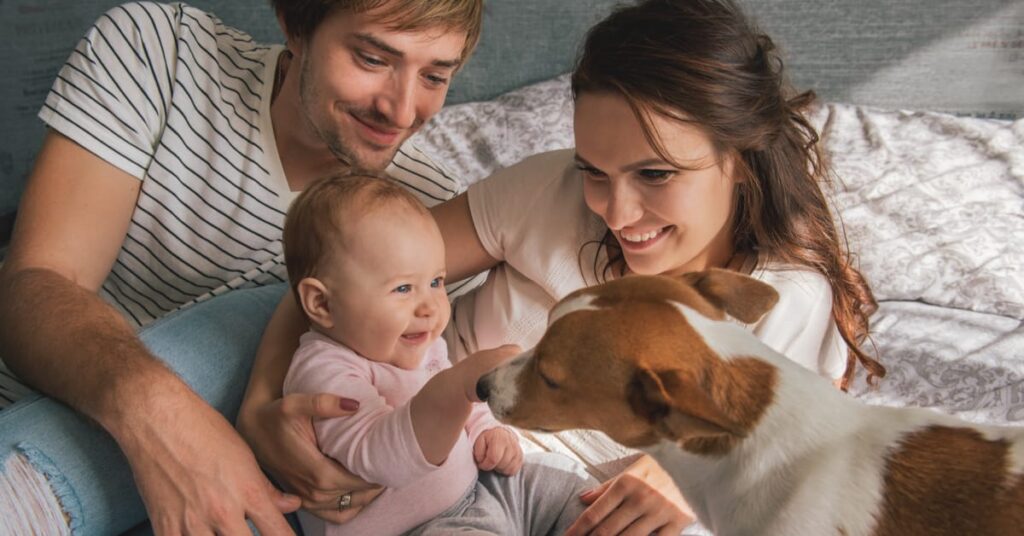
Many of us have fond memories of playing with dogs as children. However, it’s best for all interactions between dogs and children to be closely supervised. This is especially important when dogs are interacting with babies and young children.
Adult supervision is important to ensure that both dogs and kids are staying safe, having fun, and not getting overwhelmed.
If you can’t supervise your dog around children, they should be behind a baby gate, door, or crated for everyone’s safety and comfort. Dogs should not sleep in children’s bedrooms or with children as these interactions cannot be fully supervised.
Manage Together Time
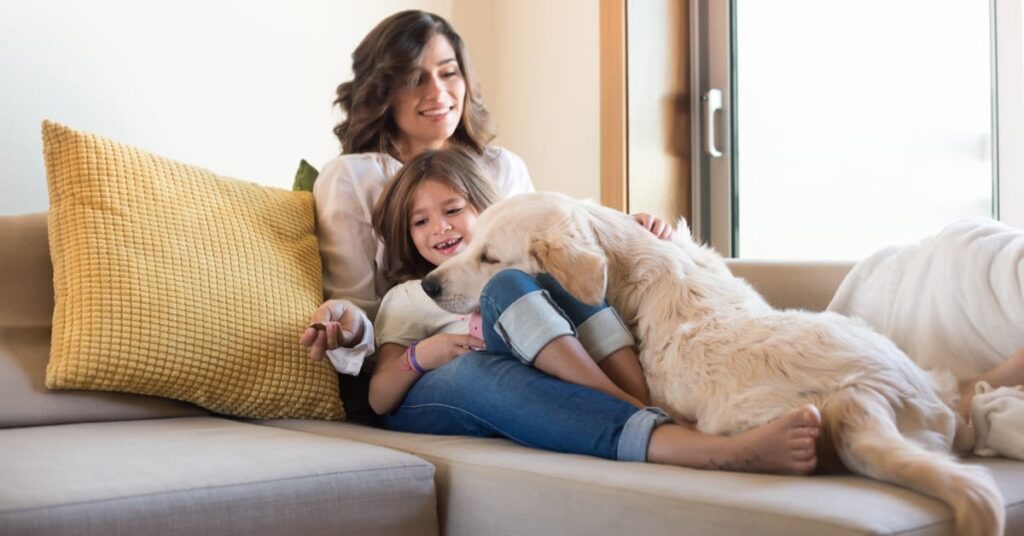
When it comes to fostering positive relationships between dogs and children, prevent interactions that are likely to be uncomfortable for either of them. If you have a child who is scared of dogs, for example, avoid letting your dog get close to them. This may mean keeping your dog separate from a child visiting your home.
Never allow children to sit on your dog, stand on your dog, pull your dog’s hair, ears, or tail. Instead, teach children where your dog is comfortable being petted, and the appropriate way to pet a dog. Watch your dog’s body language to make sure they are comfortable.
Keep Play Safe and Fun
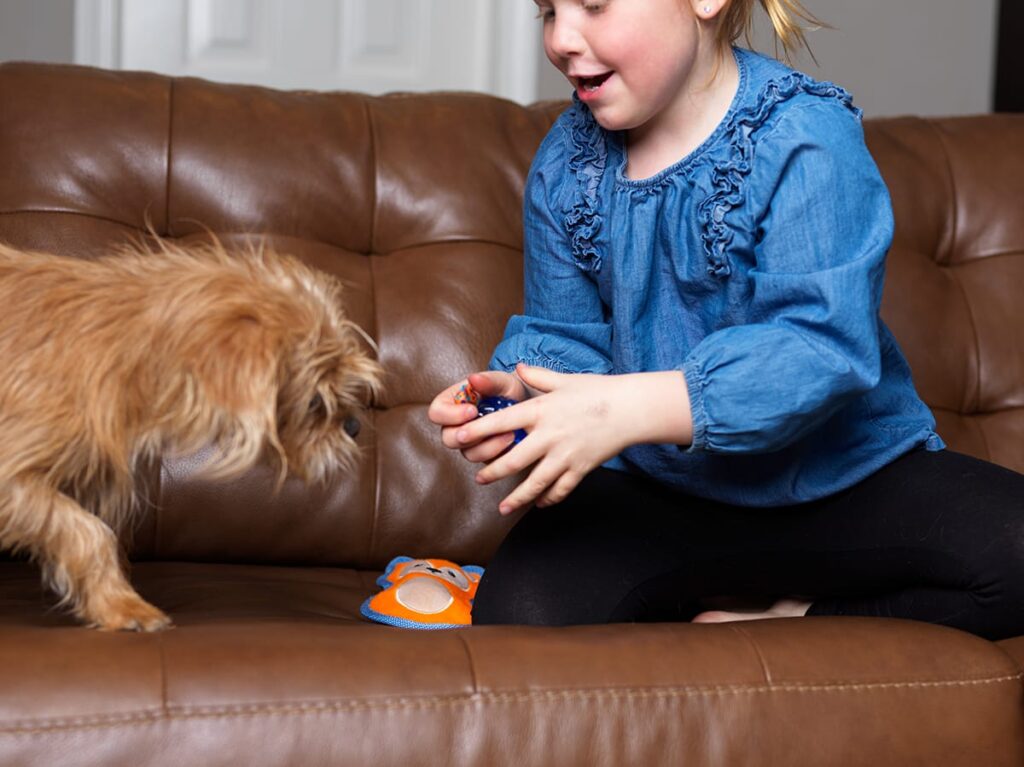
Although dogs might be cute and fluffy, they are not stuffed animals and need to be treated with respect.
Make sure that any games being played with dogs and children are supervised. Avoid letting kids and dogs play roughhousing games which can escalate unexpectedly. Don’t allow children to dress dogs up in doll clothes or pull them around as this can be uncomfortable and stressful for dogs. Similarly, children should be taught that behaviors that many of us find loving or comforting like hugging, are very uncomfortable for most dogs and should be avoided.
Children can also learn about canine body language. This will help them understand if something they are doing is making a dog uncomfortable.
Respecting a dog’s physical comfort and body language is essential for helping dogs and kids to have positive relationships.
Training Time As Family Time
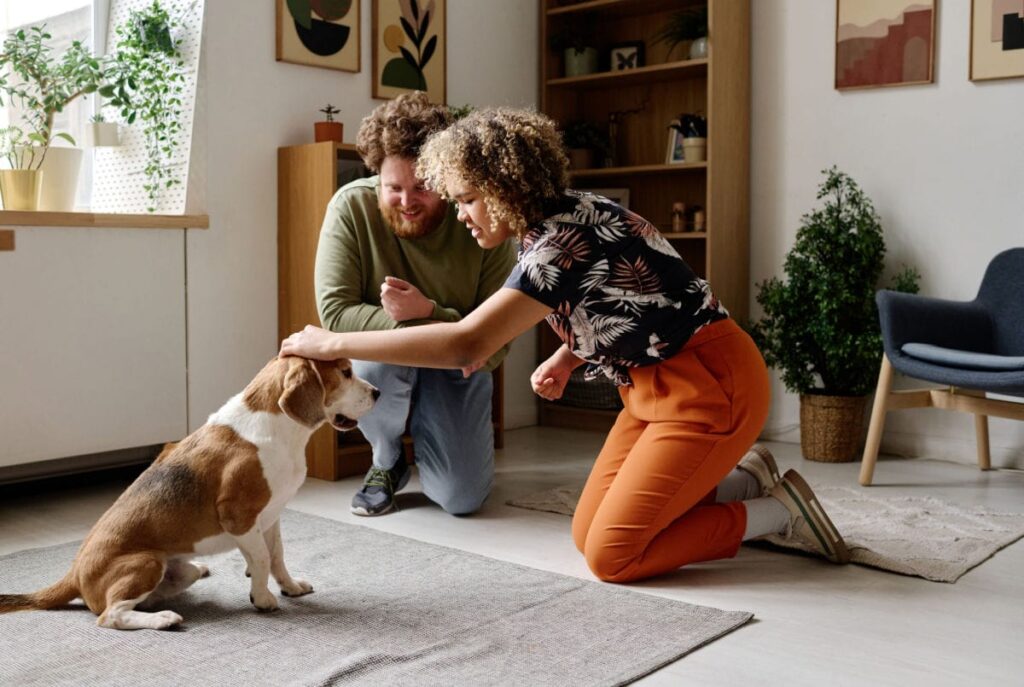
Training together as a family is a great way to encourage appropriate bonding between dogs and children. Many puppy classes or basic obedience classes are happy to have children accompany their parents to class. If children aren’t allowed, ask your trainer for advice on what activities can be practiced with your kids at home.
Positive reinforcement-based training is something that young children can get involved with. They can practice at home (under supervision), which helps to foster positive connections and communication between your dog and child.
Training helps to build a child’s confidence about how to engage with dogs. It also helps dogs to understand appropriate ways to engage with children. However, kids should not ever be put in a position of working through any behavioral modification with a dog. Training with people of all ages should be positive and reward-based; children should never scold or correct a dog in life or as part of training. If a dog does something wrong, it’s up to responsible adults to intervene and create a situation where everyone can be successful moving forward.
Boundaries & Safe Spaces
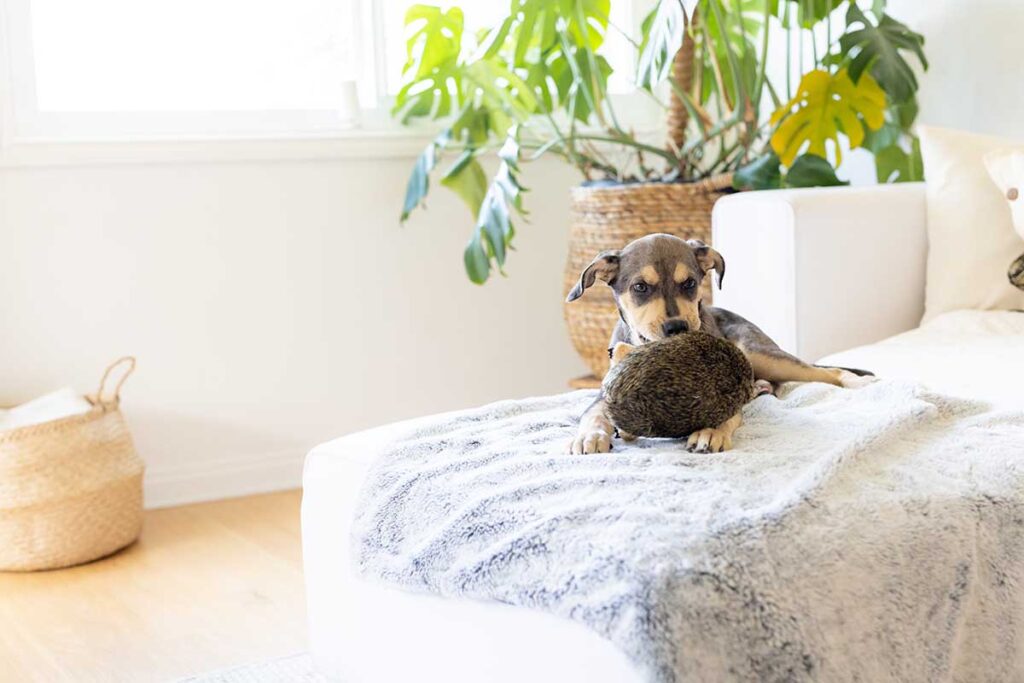
Boundaries are especially important for dogs and children to exist together in the home. Allow your doggie their own private space where they can get away from children such as a crate or bed. Use management strategies like baby gates to make an area off-limits. Make sure that children understand that when the dog is in their crate they shouldn’t ever be disturbed.
Dogs also should never be expected to tolerate children in or around their food bowls. Make sure that your dog is served its meals away from prying child hands.
It’s also good to teach children to not touch a dog’s bones, chews, or toys. Some dogs may be protective of their things (also known as resource guarding). It’s equally important that your kids have their own spaces separate from the dog.
Many dogs understandably get confused about children’s toys and assume they are dog toys. Use baby gates on the door of children’s bedrooms or playrooms. This ensures that kids have places to safely play and prevents dogs from having access to their toys which could be damaged or harmful if swallowed.
Should Kids Walk Dogs?
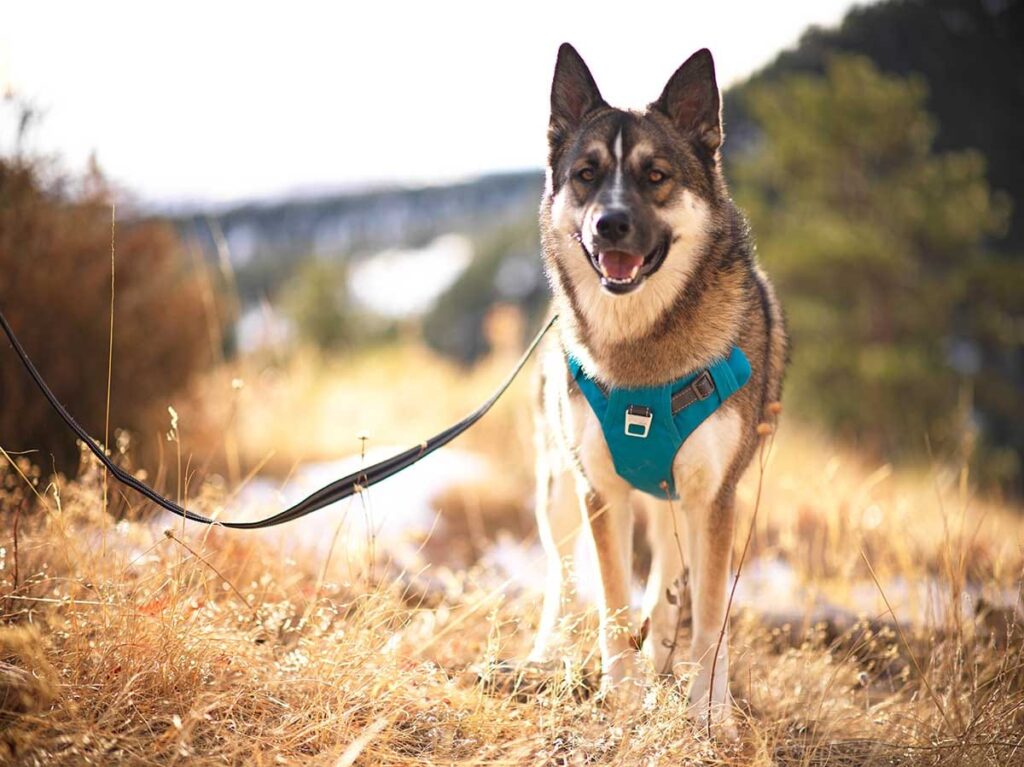
Determining if a child can walk a family dog depends on where you are walking, the size and temperament of your dog, as well as the age and responsibility level of your child. It’s important that a kid and dog be very comfortable together. The child should be old enough to physically control a dog before allowing them to hold a dog’s leash.
Supervise kids while they are walking dogs. This ensures they are appropriately handling the dog by making sure it doesn’t walk into the street, approach people or other dogs, and are praising and rewarding the dog for good behavior.
In crowded and distracting areas such as a busy park, do not allow young children to control the leash. Consider walking your dog on a double leash if they are a large size or particularly excited. With a double leash, a responsible adult is actually walking the dog. There is a second leash attached to the dog’s harness which a child can hold on to.
Becoming a Junior Handler
Is your child excited about dogs and wants to learn about dog training? There are a variety of opportunities for kids to get involved with training, handling, and getting involved in dog sports. 4-H is a national organization where kids and teens learn to train dogs alongside other kids and then can compete with their dogs in various sports and events.
The American Kennel Club also has a robust Junior Handler program where kids can train and compete with their dogs in a variety of dog sports, including Agility and Obedience, while learning about dog behavior and how to properly care for them. These are all activities that kids can do with a family dog regardless of if they are purebred or mixed breed.
A Note on Bite Risks
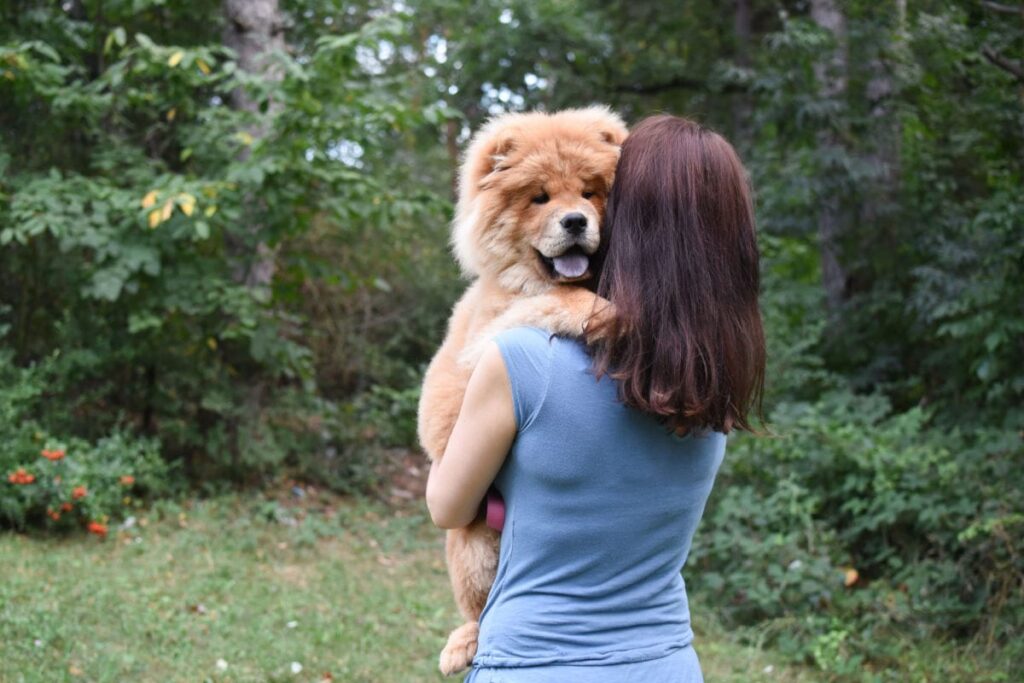
None of us like to think our dog could bite, but all dogs under the right circumstances can be a bite risk. Although we want to only think about interactions between dogs and children positively, and we ourselves may have very positive memories of engaging with dogs as a kid, it’s important to be realistic about the inherent risks of children and dogs interacting with each other.
Unfortunately, millions of dog bites happen annually, and most of those bites happen to children. The CDC explains that dog bites most commonly take place with young children who are bitten by familiar dogs such as family pets.
Any dog breed can bite, including dog breeds commonly associated with being family-friendly such as golden retrievers. Just because a dog was friendly in the past doesn’t mean it will be comfortable with small children.
For everyone’s safety children and dogs should always be supervised when they are spending time together. Set everyone up for success. Make sure that children are appropriately interacting with dogs, and that dogs have their own space away from children.
If you are having a new baby or considering adding a new dog to your family, it’s always a great idea to work with a dog trainer to get support for how to integrate your new family members successfully. With careful planning, care, and management it’s possible to give your dogs and kids the best chance at building a healthy relationship.

